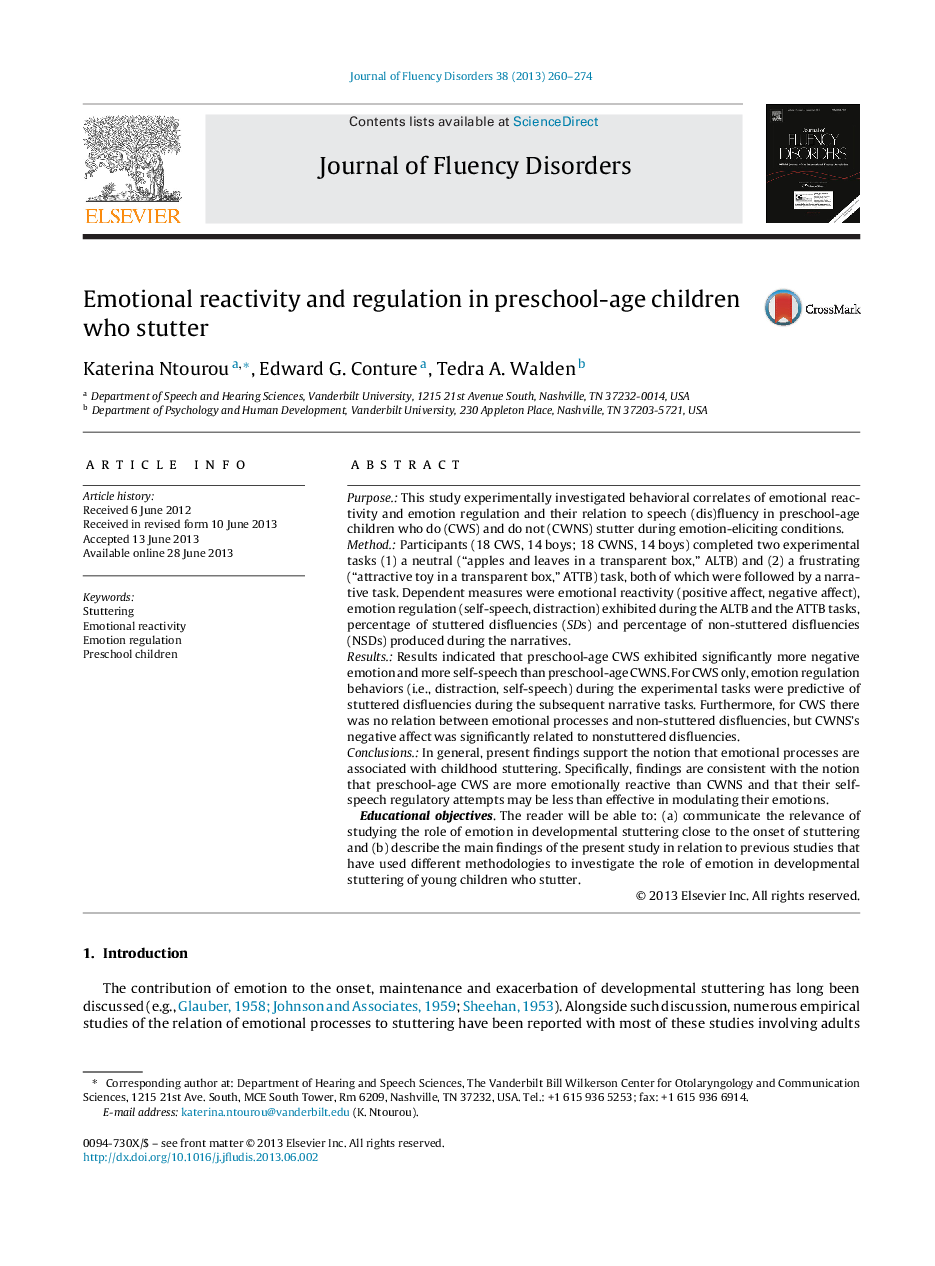| کد مقاله | کد نشریه | سال انتشار | مقاله انگلیسی | نسخه تمام متن |
|---|---|---|---|---|
| 911393 | 917920 | 2013 | 15 صفحه PDF | دانلود رایگان |

• Preschool-age CWS are more emotionally reactive than their normally fluent peers.
• There is a relation between emotional processes and rate of stuttered disfluencies.
• Emotional reactivity and emotion regulation seem to be associated with stuttering.
Purpose.This study experimentally investigated behavioral correlates of emotional reactivity and emotion regulation and their relation to speech (dis)fluency in preschool-age children who do (CWS) and do not (CWNS) stutter during emotion-eliciting conditions.Method.Participants (18 CWS, 14 boys; 18 CWNS, 14 boys) completed two experimental tasks (1) a neutral (“apples and leaves in a transparent box,” ALTB) and (2) a frustrating (“attractive toy in a transparent box,” ATTB) task, both of which were followed by a narrative task. Dependent measures were emotional reactivity (positive affect, negative affect), emotion regulation (self-speech, distraction) exhibited during the ALTB and the ATTB tasks, percentage of stuttered disfluencies (SDs) and percentage of non-stuttered disfluencies (NSDs) produced during the narratives.Results.Results indicated that preschool-age CWS exhibited significantly more negative emotion and more self-speech than preschool-age CWNS. For CWS only, emotion regulation behaviors (i.e., distraction, self-speech) during the experimental tasks were predictive of stuttered disfluencies during the subsequent narrative tasks. Furthermore, for CWS there was no relation between emotional processes and non-stuttered disfluencies, but CWNS's negative affect was significantly related to nonstuttered disfluencies.Conclusions.In general, present findings support the notion that emotional processes are associated with childhood stuttering. Specifically, findings are consistent with the notion that preschool-age CWS are more emotionally reactive than CWNS and that their self-speech regulatory attempts may be less than effective in modulating their emotions.Educational objectives. The reader will be able to: (a) communicate the relevance of studying the role of emotion in developmental stuttering close to the onset of stuttering and (b) describe the main findings of the present study in relation to previous studies that have used different methodologies to investigate the role of emotion in developmental stuttering of young children who stutter.
Journal: Journal of Fluency Disorders - Volume 38, Issue 3, September 2013, Pages 260–274